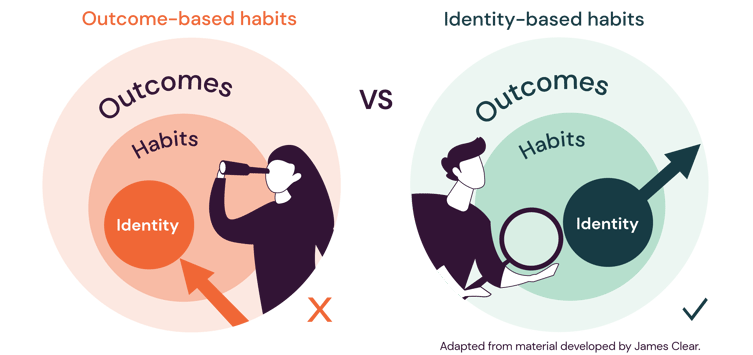Who do you want to be?
Compare these two statements: a child saying, "When I grow up, I’m going to be…" and an accountant saying, "When I get on top of my workflow, I’m going to…".

In both statements, the speaker sounds as though they fully intend to achieve the end goal. On closer inspection, however, the first is highly aspirational whereas the second sounds more like an excuse. As the reader, we draw the conclusion that the end goal is just not going to happen. So, how do we bring about the change needed to achieve our desired goals? The answer lies in a model, a mindset, and a process.
The Model - OARBED
In my view, the most powerful business model ever written is the OARBED model; we mustn’t act below the line by blaming others, making excuses, or living in denial. To be successful, we need to take ownership, accountability, and responsibility.
In the present moment, a child cannot be the astronaut they aspire to be when they grow up. An accountant, however, can get on top of their workflow if there’s a compelling enough reason - negating that is denial, as confronting as that may be. How else do some accountants achieve time freedom when others don’t?
The way to create a better future for ourselves is to stay above the line. To take ownership of the need to change. To be accountable to the people we owe that changed behaviour to. To recognise that we are responsible for our own actions (and can’t control anyone else’s).
The Mindset - BE DO HAVE
On top of the OARBED model, we need the right mindset. The accountant in the above example is living with a HAVE DO BE mindset; ‘when I have enough time to get on top of my workflow, I'll be able to do more value-added work, and will be a modern accountant'.
Applying the OARBED model (above the line behaviour is all about ‘I can, I will, I must’), let’s turn the previous statement on its head; ‘in order to be a modern accountant, I need to do things like delegate, outsource, and stop working for D clients, then I will have more time and a more successful firm'.
The Process - Identity Based Habits
Combining the OARBED model with the BE DO HAVE mindset, we now need to create some habits to reinforce the right behaviours. Let’s go back to the accountant example. Chances are high that this person is living through outcome-based habits; the outcome they want is to be able to do value-added work. The habits stopping them from achieving the outcomes are things like ineffective delegation, their inability to say no to D clients, and/or poor training. These habits exist because the accountant believes their clients expect them to do the work, as they're the best at it.

In order to achieve the desired outcomes permanently, it's far more effective to develop identity-based habits.
The accountant must identify first as a modern accountant (who they need to Be). Then they need to make it easier to create modern accountant habits (e.g. calling two clients every day before having a coffee) and harder to revert to traditional accountant habits (e.g. don’t stack file reviews on their desk - make themselves come looking for them when they’ve run out of other things to do). Arguably, the more they live into this new identity and reinforce consistent good habits, the more likely it is that the outcome will resolve itself.
The answer to bringing about permanent change therefore lies with us:
- Live through the OARBED model and stay above the line.
- Apply the BE DO HAVE mindset to our actions and behaviours.
- Reinforce those good behaviours using outcome-based habits.
"The process of behaviour change always starts with awareness. You need to be aware of your habits before you can change them."
- James Clear, author of Atomic Habits

